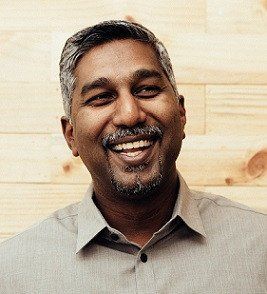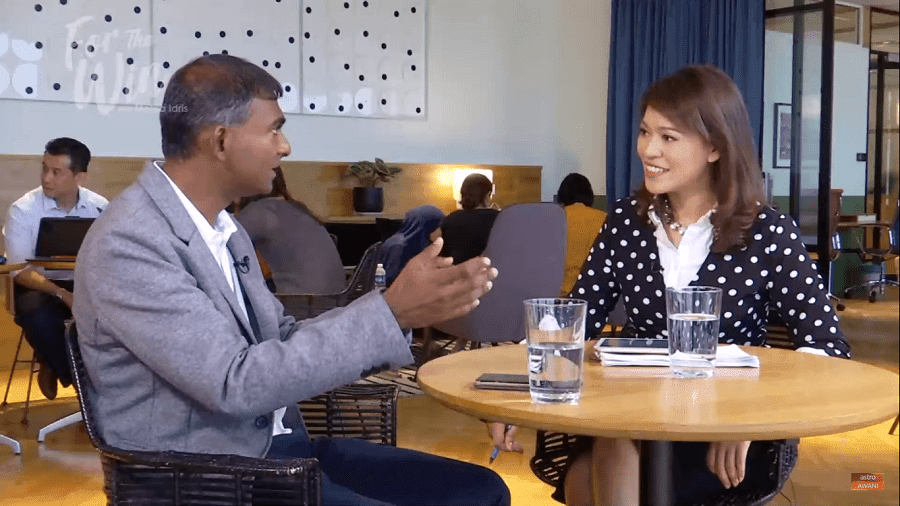4 Steps To Build Your Leadership Endurance Muscle

What you can do to build that brawn

I started thinking about leadership endurance recently after reading an article about how humans are built for endurance.
There’s a whole theory of evolution that studies our running endurance, as apparently, our original natural advantage over other animals was our endurance.
We may not have been the fastest or strongest animals around, but we had more endurance than most, because we sweat and can regulate body temperature better.
So our endurance played a large part in our evolution.
It got me thinking and I realised that we don’t commonly talk about endurance as a trait to describe leaders.
We often talk about many other characteristics of a leader, but rarely endurance.
We do talk about how failures build character and how going through tough times is necessary.
We’ve also heard that success is a marathon and not a sprint. All these do allude to the need for endurance in leadership, so let’s dive deep into that.
Listen to its corresponding podcast:
1. Have a clear goal
Be clear about why we are in the journey in the first place. Knowing the why of what you are doing, much like what Simon Sinek preaches, helps to keep us going.
You must have that vision in your mind at all times, and it must be crystal clear.
Related post: “Why How What” Inside-Out Leadership: The Difference Between Winners And Losers
For that to be true, that vision must be aligned with who you are. Knowing yourself and knowing the why or the vision really will help you persist, because it gives you deep-rooted belief.
2. Have a clear plan
As much as the big picture is important, so is each step that you take. You see, endurance is always tested when unexpected things happen.
You can’t avoid unexpected things, but you can minimise it by doing a lot of planning and mitigation.
Endurance is not just about leaders willing themselves through difficulties; it is also about wise leaders charting a course that is most likely to succeed.
Think of it as an Everest expedition, which is a simulation that we do at Leaderonomics.
We look at climbing the summit of Everest as requiring endurance, but imagine the planning that goes behind it to even give yourself the chance of success.
The Tanzanian marathon runner Juma Ikanga once said this after winning a New York marathon:
“The will to win is nothing without the will to prepare”.
So, it’s not only how you are planning to go through the journey, but it’s also the practice and preparation that you do to face your journey.
This might interest you: How You Can Partner With ‘Stress’ To Build Your Own Resilience
3. Be realistic about obstacles
You will inevitably get into trouble if you think you have everything planned and know exactly how thing are going to turn out.
We live in a VUCA (volatile, uncertain, complex and ambiguous) world, and that’s just not going to happen.
Recommended for you: How Do We Survive VUCA?
People often lose their way when expectations differ wildly from reality.
However, if you go in expecting some hurdle, then trouble won’t surprise you. If you expect a smooth sailing ride, then even the smallest hurdle will feel like a mountain.
It doesn’t mean you can predict all obstacles that come your way, but expecting trouble may actually help keep us calm when trouble really do happen.
At least we can be calm enough to remember our vision, or to relook at our plans.
Case study: Ben Saunders and his Antartica expedition
On a TED talk, Ben Saunders shared how he and a friend finished the most ambitious expedition ever – they walked across Antartica to the South Pole and back. It was 1,800 miles – almost 3,000km!
They planned that trip to the very detail, and it took a lot of endurance. It was over 100 days of dragging heavy sleds across ice.
They were outdoors the whole time, mostly blinded by whiteouts and gruelling conditions.
I was personally trying to understand what it takes to mentally keep going in such situations.
It’s a good case study about knowing yourself, having an audacious goal that drives you, and having the right plan.
There was one surprising lesson that I learnt from Saunders.
Personally, I think that celebrating your small victories occasionally helps to maintain your endurance level. Or what people would say, ‘to stop and smell the roses’.
In that journey that Saunders and his friend took, when they got to the South Pole (60 days in, after walking 900 miles) where there was a scientific research station, all they did was take a picture, turn right back around and keep walking.
They didn’t even go in or have a meal; absolutely nothing!
That drove home the point that we started with: you need to know yourself.
Saunders was more worried that if he went inside the station and took a break, he may not get up to continue his expedition. So he decided to keep his eyes on the prize and just keep going.
Now that may work for some people. If you know that “slowing down” to appreciate the progress may be detrimental, don’t do it.
While for others, those small victories and letting it sink in will propel you to go further. It also takes incredible self-awareness and experience to know what works for you and what doesn’t.
4. Having the right support system
This may mean different things to different people. The gist is that you must know what kind of support you will need to be successful.
Is it a mentor or a coach? Is it a proven method for you to overcome stress? Is it having the right team with the right skills around you?
No one achieves anything in this world on his/her own; everyone was supported in his/her journey. That applied to Saunders in his expedition to the South Pole, and even Steve Jobs too.
They each had the right team around them to help them to be successful. That also means that we should ask for help, and it’s not something to be ashamed of.
See also: Supporting Those Who Support You
Bringing it all together
There are a lot of great stories out there like Saunders’. And for each one, you will see the common thread: having a clear goal, having a plan, being realistic and having the right support.
Leadership endurance is not necessarily something we are born with, but it can be learnt. It’s similar like physical endurance.
What about mental endurance? You should also train it just like you’re training other muscles. Of course, the gym to train these mental muscles is called life.
Let me leave you with this one last thought: Great leaders not only can endure tough times; more importantly they also help others endure and persist to reach their goals.
Interested to know what this Everest expedition simulation is all about? Engage with the Leaderonomics team and see how we can help you! Write in to info@leaderonomics.com to find out more.
Leadership
Sashe is certain that his 18-year early career in IT was about leadership and not technology. He has spent the last 8 years redefining what that means as a HR consultant and learning leader with Leaderonomics.






